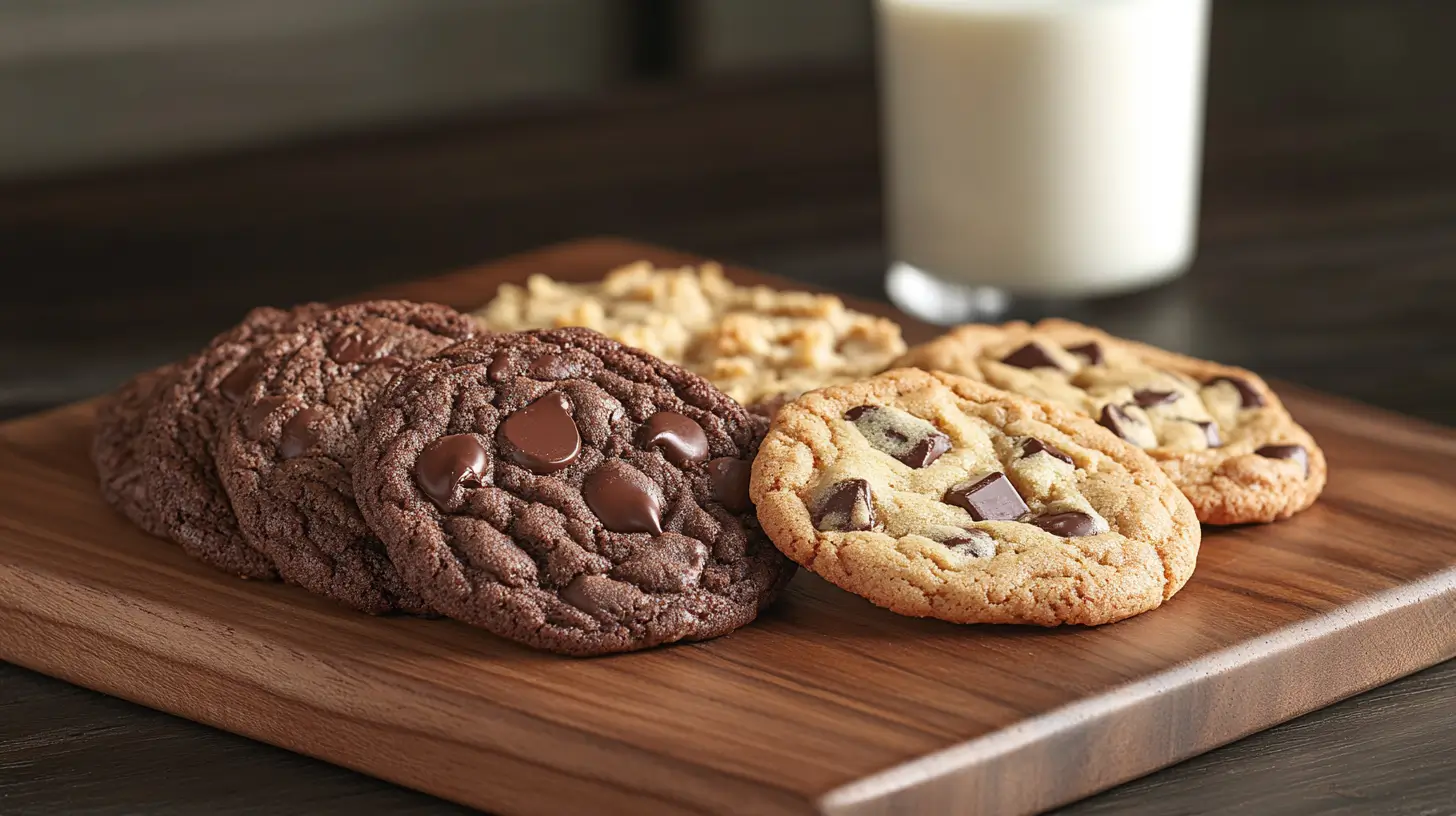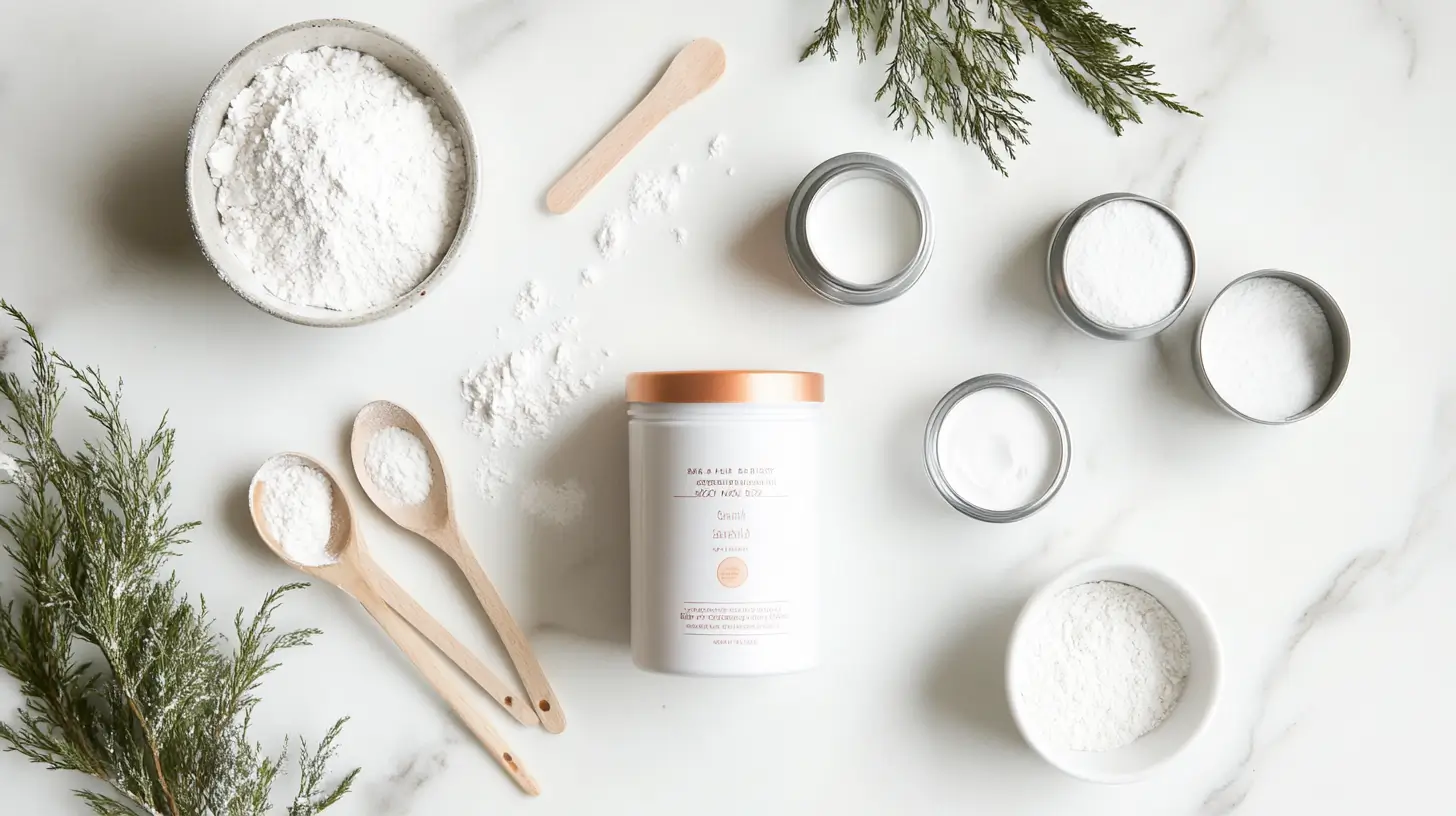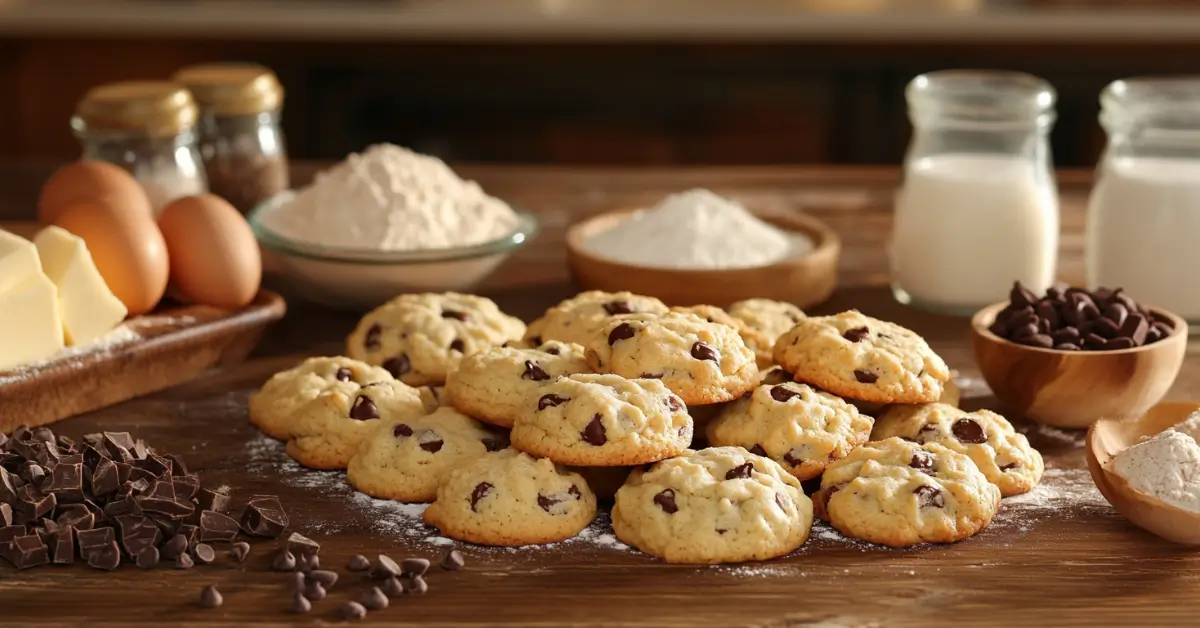Introduction
When baking cookies, achieving the perfect texture is a primary goal for bakers. One key ingredient often discussed in this context is baking soda. Does baking soda make cookies softer or harder? The answer lies in understanding its role in cookie recipes. Baking soda not only influences how cookies rise but also plays a crucial role in determining their softness or crispness.
Cookie texture matters because it affects the eating experience. Some prefer soft, chewy cookies that melt in the mouth, while others favor crispy ones with a satisfying crunch. By exploring the science and techniques surrounding baking soda, bakers can control this essential aspect and consistently produce cookies with their desired texture.
What is Baking Soda?
Baking soda, chemically known as sodium bicarbonate, is a white crystalline powder that plays a pivotal role in baking. Its primary function is as a leavening agent, helping baked goods rise during cooking.
How Baking Soda Works as a Leavening Agent
When combined with acidic ingredients and exposed to heat, baking soda undergoes a chemical reaction. This reaction releases carbon dioxide gas, which creates air pockets in the dough. These air pockets expand, giving cookies their characteristic rise and affecting their overall structure.
Key features of baking soda:
- Composed of sodium, hydrogen, carbon, and oxygen.
- Reacts instantly when moistened and exposed to acids.
- Enhances browning due to its alkalinity.
By using baking soda correctly, bakers can achieve specific textures. But does baking soda make cookies softer or harder? The answer depends on how it interacts with other ingredients in the dough.
The Science Behind Baking Soda in Cookies
Baking soda’s role extends beyond leavening. Its chemical properties directly impact the dough’s pH level and structure, influencing the texture of the final product.
Chemical Reaction When Baking Soda is Heated
When baking soda is heated, it decomposes into sodium carbonate, water, and carbon dioxide. The release of carbon dioxide creates bubbles, resulting in a lighter, airier texture. However, without the presence of acidic ingredients, this reaction may not fully occur, leaving a soapy aftertaste.
Baking Soda’s Effect on pH and Dough Structure
Baking soda increases the pH level of cookie dough, making it more alkaline. This higher pH level promotes browning through the Maillard reaction and weakens gluten formation. Weak gluten strands result in cookies that spread more and have a tender texture. Thus, baking soda is often associated with softer cookies.
However, factors such as temperature, ingredient ratios, and baking time also determine whether baking soda makes cookies softer or harder.
Does Baking Soda Make Cookies Softer or Harder?
The answer to this question depends on several variables. While baking soda is generally used to create softer cookies, improper usage can lead to unintended results.
Baking Soda’s Impact on Cookie Texture
When correctly balanced with acids, baking soda encourages cookies to spread and promotes a tender texture. This is because the carbon dioxide released during baking lightens the dough, creating softer cookies. Conversely, if there’s too much baking soda, the cookies may overspread, becoming thin and crisp.
Factors Affecting Baking Soda’s Role
Several factors influence whether baking soda makes cookies softer or harder:
- Temperature: Baking at higher temperatures causes cookies to set quickly, resulting in crisp edges and soft centers.
- Ingredient Ratios: A higher proportion of fat and sugar typically yields softer cookies, while more flour can make them denser.
- Baking Time: Shorter baking times keep cookies soft, while longer times lead to a firmer texture.
Understanding these variables allows bakers to control the impact of baking soda and achieve their preferred cookie texture.
Role of Acids in Cookie Dough
Acids are critical in activating baking soda. Without an acidic ingredient, baking soda will not produce carbon dioxide, leading to flat, dense cookies.
Interaction Between Baking Soda and Acidic Ingredients
When baking soda combines with acidic ingredients, such as brown sugar or vinegar, the acid neutralizes the alkaline properties of baking soda. This interaction not only produces the necessary leavening gas but also enhances flavor by balancing sweetness with a slight tang.
Examples of Common Acids Used in Cookie Recipes
- Brown sugar: Contains molasses, which is naturally acidic.
- Buttermilk: Adds both moisture and acidity.
- Cream of tartar: A pure acid often paired with baking soda.
- Vinegar or lemon juice: Occasionally used for specific recipes to ensure a soft, tender crumb.
These ingredients work synergistically with baking soda, ensuring it makes cookies softer rather than hard or overly dense.
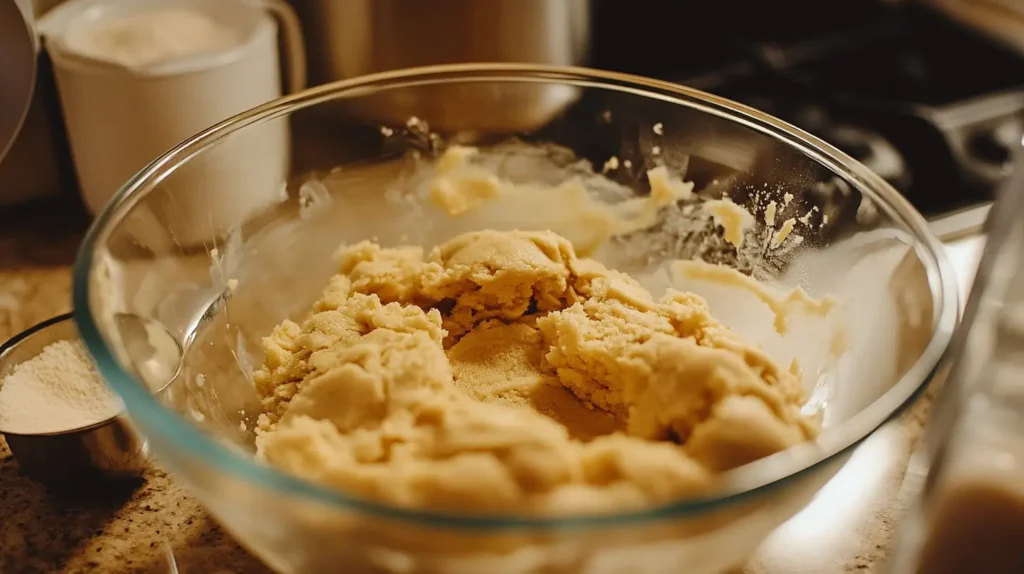
Baking Soda vs. Baking Powder
While both baking soda and baking powder are leavening agents, they function differently in baking. Understanding these differences is essential for achieving the desired texture in cookies.
Key Differences and When to Use Each
- Baking Soda: Pure sodium bicarbonate. Requires an acid to activate and works quickly, making it ideal for recipes with acidic ingredients.
- Baking Powder: Contains both baking soda and a built-in acid. Suitable for recipes without additional acidic ingredients.
Why Baking Soda Requires an Acid to Activate
Without an acid, baking soda remains inactive, resulting in a lack of leavening and potential off-flavors. By incorporating acidic components like brown sugar or yogurt, bakers can ensure proper activation and achieve cookies that are softer or more tender.
Cookie Recipes with Baking Soda
Baking soda plays a key role in shaping the texture of cookies. Whether you want soft, chewy cookies or crisp, firm ones, understanding how baking soda interacts with other ingredients can help you achieve the desired result.
Soft Cookies: Recipes That Benefit from Baking Soda
Soft cookies often rely on baking soda because it weakens gluten, allowing the dough to spread and create a tender texture. When combined with acidic ingredients like brown sugar or buttermilk, baking soda facilitates carbon dioxide release, leading to soft, airy cookies.
Examples of soft cookies where baking soda works well:
- Chocolate chip cookies: The reaction between baking soda and brown sugar creates the classic chewy texture.
- Snickerdoodles: The cream of tartar provides the acidity needed for softness.
- Molasses cookies: Baking soda enhances the spread and complements the acidic molasses.
Hard Cookies: When Less or No Baking Soda is Needed
For crispy or firm cookies, recipes often reduce or eliminate baking soda. Without significant leavening, the dough retains its structure, leading to denser, crunchier cookies.
Examples include:
- Biscotti: These cookies have minimal rise, ensuring they remain firm and suitable for dipping.
- Shortbread cookies: Their crumbly texture is achieved by skipping baking soda altogether.
Balancing baking soda with other ingredients is the key to perfecting both soft and hard cookie recipes.
Common Mistakes with Baking Soda in Cookies
Although baking soda is a common ingredient, improper usage can lead to disappointing results. Avoiding common mistakes ensures cookies turn out as intended.
Overusing Baking Soda and Its Effects
Using too much baking soda can lead to:
- Overspreading: Cookies may become too flat and thin.
- Bitter taste: Excess baking soda leaves an unpleasant alkaline flavor.
- Off-putting color: Over-alkalinity can result in overly browned cookies.
Stick to the recipe’s measurements to prevent these issues.
How to Measure and Mix Baking Soda Correctly
Proper measuring and mixing techniques are crucial:
- Use a level teaspoon or the specified measurement.
- Mix baking soda thoroughly into dry ingredients to ensure even distribution.
- Combine wet and dry mixtures evenly to activate baking soda during baking.
By carefully measuring and mixing baking soda, bakers can avoid common pitfalls and create consistently excellent cookies.
The Role of Temperature in Baking Soda Activation
Temperature is a critical factor in baking soda’s performance. It directly influences the chemical reactions responsible for texture and rise.
How Oven Temperature Affects Baking Soda’s Reaction
When exposed to heat, baking soda decomposes, releasing carbon dioxide gas. However, if the oven temperature is too low:
- The reaction may not occur fully, resulting in dense cookies.
- Cookies may spread excessively due to prolonged baking times.
Conversely, too high a temperature can cause uneven rise and overly browned edges.
Tips for Ensuring Even Baking
To achieve optimal results:
- Preheat the oven to the recommended temperature.
- Use an oven thermometer to verify accuracy.
- Space cookies evenly on the baking sheet for uniform heat distribution.
By managing oven temperature effectively, bakers can maximize baking soda’s benefits and ensure well-textured cookies.
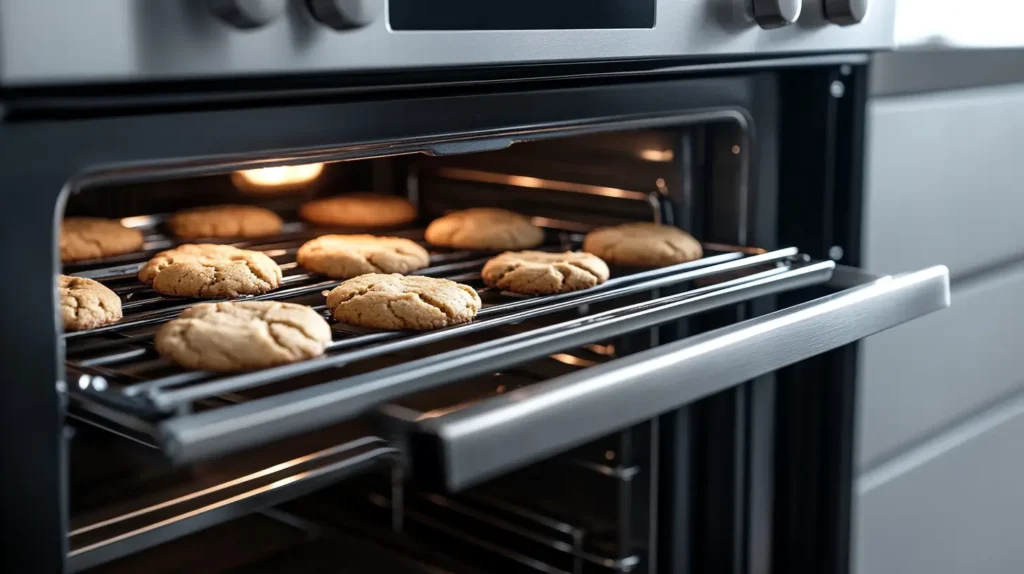
Substitutes for Baking Soda in Cookies
If baking soda is unavailable, several substitutes can be used. Each alternative affects cookie texture differently.
Common Substitutes
- Baking powder: Contains both baking soda and an acid, making it a suitable 1:3 replacement. Cookies may rise less and have a denser texture.
- Self-rising flour: Includes leavening agents, eliminating the need for additional baking soda. It works well for cookies requiring a moderate rise.
- Potassium bicarbonate: A sodium-free substitute with similar leavening properties, though it may slightly alter flavor.
How These Substitutes Impact Cookie Texture
Substitutes like baking powder create a slower, less intense reaction. This can result in cookies that are slightly puffier and less crisp. Understanding these differences helps bakers make informed choices when replacing baking soda.
Troubleshooting Baking Soda Issues in Cookies
Even experienced bakers encounter issues with baking soda. Identifying and addressing these problems can save a batch of cookies from going to waste.
Flat Cookies: Causes and Solutions
Flat cookies may result from:
- Insufficient flour, leading to weak dough structure.
- Excessive baking soda, causing over-spread.
- Warm dough, which spreads too quickly in the oven.
Solutions:
- Add more flour if the dough seems too loose.
- Chill the dough before baking to slow spreading.
- Adjust the baking soda to match the recipe’s requirements.
Bitter Taste from Baking Soda: How to Fix It
A bitter taste often indicates too much baking soda or insufficient acid. To fix this:
- Reduce baking soda in future batches.
- Add more acidic ingredients like brown sugar, yogurt, or vinegar to balance flavors.
Troubleshooting ensures that baking soda enhances cookies rather than detracts from their quality.
FAQs
What is the Secret to Making Cookies Soft and Chewy?
The secret to soft and chewy cookies lies in the balance of ingredients and baking techniques. Here are some tips:
- Use more moisture-rich ingredients: Brown sugar, which contains molasses, adds moisture and softness to the cookies. Similarly, butter contributes to a tender texture.
- Don’t overbake: Remove cookies from the oven when the edges are set but the centers appear slightly underbaked. They will firm up as they cool.
- Chill the dough: Refrigerating cookie dough before baking slows spreading and ensures a soft center.
- Incorporate baking soda: Baking soda helps cookies spread and promotes a tender texture by weakening gluten structure.
How Does Baking Soda Affect Cookies?
Baking soda is a leavening agent that impacts the texture and appearance of cookies by:
- Creating air pockets: It releases carbon dioxide gas when it reacts with acids, giving cookies a lighter texture.
- Increasing spread: Baking soda encourages dough to spread during baking, resulting in flatter cookies.
- Promoting browning: Its alkalinity enhances the Maillard reaction, leading to golden-brown cookies.
Properly balanced with acidic ingredients, baking soda makes cookies softer and more flavorful.
What Makes Cookies Hard or Soft?
Several factors determine whether cookies turn out hard or soft:
- Soft Cookies:
- Higher fat content (e.g., butter or shortening) increases tenderness.
- Brown sugar adds moisture and enhances chewiness.
- Shorter baking times preserve softness.
- Hard Cookies:
- Reduced fat or higher flour ratios result in firmer textures.
- Longer baking times remove more moisture, creating crisp cookies.
- Using granulated sugar instead of brown sugar can make cookies harder.
Balancing ingredient proportions and baking methods is key to achieving the desired texture.
What is the Trick to Soften Hard Cookies?
If cookies become too hard, try these tricks to soften them:
- Add moisture: Place a slice of bread or an apple wedge in an airtight container with the cookies. The moisture will transfer to the cookies, softening them overnight.
- Microwave briefly: Heat cookies for 10-15 seconds to restore some softness. Wrap them in a damp paper towel for best results.
- Store properly: Keep cookies in an airtight container to maintain their softness. Avoid refrigerating them, as the cold air can dry them out.
These methods help revitalize hard cookies, making them enjoyable again.
Conclusion
Baking soda is a versatile ingredient that plays a vital role in shaping cookie texture. Does baking soda make cookies softer or harder? The answer depends on how it is used, its interaction with other ingredients, and the baking conditions.
By following proper techniques, avoiding common mistakes, and understanding substitutes, bakers can confidently use baking soda to create cookies tailored to their preferences. Whether aiming for soft, chewy treats or crisp, firm delights, the right balance of baking soda unlocks the secret to perfect cookies every time.



